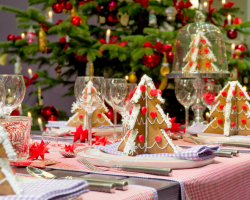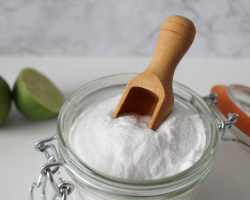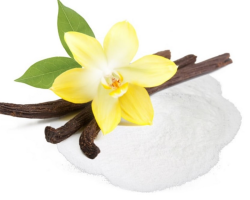Many housewives are wondering - grams and milliliters the same thing or not? Look for an answer in the article.
Content
- Why recalculate grams into milliliters?
- Is grams and milliliters the same thing or not?
- The ratio of grams and milliliters: how is it performed?
- How to translate grams into milliliters: table
- Video: Measurement of grams in glasses and spoons
- Video: Preparing desserts without scales: how to measure the grams with a spoon and a glass?
- Video: translation of units of measurement
The transfer of grams into milliliters may be required not only in mathematics and physics lessons, but also in the kitchen. The ingredients in culinary recipes can be indicated in grams, and milliliters, and suitable measuring devices are not always at hand. In such cases, there are sufficiently simple calculations using a calculator - ordinary or network.
Read on our website another article on the topic: "How much in a kilogram of grams: calculation". How many milligrams are in one gram - how to find out?
From this article you will learn, grams and milliliters are one and the same or not, and you will also find a table that will help translate one weight indicator to another. Everything is simple and fast. Read further.
Why recalculate grams into milliliters?

In everyday life, often there is a need to measure the volume of any substance by improvised means. So why recount grams into milliliters?
- There are frequent situations when you need to translate one unit of measure to another: preparing complex dishes according to the finished recipe, making home cosmetics, breeding children's nutrient mixtures, dosing of drugs.
- Many confuse grams and milliliters and simply equalize them.
- However, these units of measurement reflect different physical characteristics, and their ratio is noticeably different for products and substances of different densities.
Below even more useful information. Read further.
Is grams and milliliters the same thing or not?
Is it really, as some housewives believe, 100 milliliters - This is the same as 100g? Here you should accurately decide on terminology:
- Grams (g) is a unit of mass, milliliter (ml) - a unit of volume.
- 1 milliliter in the international system of units (SI) corresponds to 1 cubic centimeter.
The ratio of mass and volume depends on the density of the substance. The easiest way to calculate it is for pure water: its density is 1 g/ml. Consequently, 100 g of water really equal to 100 ml.However, for too cold or hot water, the ratio will change, although slightly. To calculate the volume of other substances, you need to know its density. So, the density of milk is 1.03 g/m - very close to the water indicator, and the density of flour - 0.57 g/mwhich already makes it impossible to simple identification of volume and mass. After all, in 1 g of flour will be contained more than 2 ml.
The ratio of grams and milliliters: how is it performed?

To translate grams into milliliters, it is necessary to divide the mass into the density of the substance. This is how grams and milliliters are performed - the formula looks like this:
- V \u003d m/r, where V is volume, m - mass and P - density.
The density value can be found in the directory in physics or searched in the corresponding tables on the Internet. The units of measurement must coincide - if in the directory the density is indicated in kilograms by a cubic meter, you must first convert its value to a gram to a milliliter (or a cubic centimeter). If not the exact value is indicated, but the limits of possible values \u200b\u200bfor the substance, it is enough to take an average indicator.
It is worth remembering: When converting milliliters into grams, you will have to do the reverse operation - to multiply the volume of the substance by its density.
In some cases, to determine the desired volume, it is easier to use domestic spoons, knowing their standard volume. For example:
- Teaspoon - 5 ml
- Tablespoon-15-18 ml
- Dessert spoon - about 10 ml
The above values \u200b\u200bare designed for liquids. When measuring bulk ingredients, you should dial them without a hill so that the volume does not increase. You can take into account the standard glass volume - 200 ml. To measure the necessary volume of the substance with a spoon or glass is convenient when preparing dishes, and this method is not suitable for medicines - the error can be significant.
It should be remembered: The mass of different substances in the same spoons will vary!
How to translate grams into milliliters: table
Below is a table for some popular culinary ingredients. So, how to translate grams into milliliters? Here are the indicators:
| Ingredients |
Density (in grams for milliliter) |
1 gram in milliliters | 10 grams in milliliters |
| Water | 1 | 1 ml | 10 ml |
| Milk | 1,03 | 0.96 ml | 9.6 ml |
| Cream 20% | 0,9 | 1.1 ml | 11 ml |
| Wheat flour | 0,57 | 1.686 ml | 16.86 ml |
| Sugar | 0,8 | 1.178 ml | 11.78 ml |
| Starch | 0,8 | 1.78 ml | 17.83 ml |
| Sunflower oil | 0,93 | 1.08 ml | 10.87 ml |
| Butter | 0.91 (according to the standard) | 1.03 ml | 10.3 ml |
| Salt | 1,3 | 0.8 ml | 8.3 ml |
The table shows that some values \u200b\u200bare calculated approximately and are accessible to rounding. It is worth noting that the density of liquid substances has close values \u200b\u200b- all of them are similar to water to one degree or another, and the resulting difference is not too significant for cooking. The density of bulk dry products may vary markedly, and here the accuracy in the calculations is more important - after all, compliance with the necessary proportions of all ingredients, greatly affects the quality of the finished dish.
Particular thoroughness in calculations require children's mixtures and medications. Fortunately, in our time they are usually produced with suitable measuring instruments - measuring spoons, caps, pipettes. And the hostess in the kitchen, if mathematical calculations seem to her too complicated, confusing and time -consuming, can use culinary online converter - He will solve the problem of translating from one unit of measurements to another in seconds. Good luck!
Video: Measurement of grams in glasses and spoons
Video: Preparing desserts without scales: how to measure the grams with a spoon and a glass?
Video: translation of units of measurement
Read on the topic:
- How to measure boric acid in powder without weight?
- In 1 ton how many kilograms?
- How many grams of flour are in one dining room and a teaspoon?
- How many grams of salt in one dining room and a teaspoon?
- How many grams of sugar in one dining room and teaspoon?
- How many grams of powdered sugar are in one 250 ml of glass?
- How many grams of sugar in one facet 250 ml of glass?
- The ratio of weight is dry and fresh, raw yeast: table







